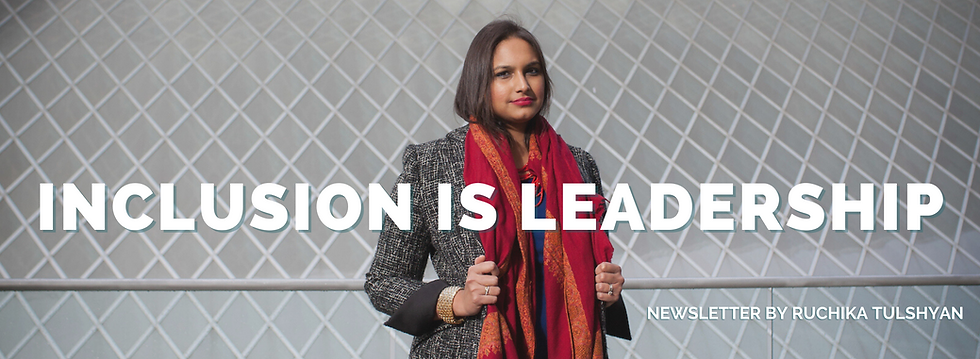How To Never Have an All-White, Male Conference Again
- Ruchika T. Malhotra
- Dec 7, 2021
- 2 min read

If I had a cent for every time I’ve been invited to speak on a “manel,” or “whanel” (a word I’ve seen thrown around to describe an all-white panel), or to speak for free…
...I’d make an enormous donation to the Northwest Immigrants Rights Project. 😉
Humor aside, diversity of backgrounds, lived experiences and identities is an important aspect to making events inclusive.
It’s surprising to me that even after so much discussion around diversity, equity and inclusion — especially after George Floyd’s murder ignited such a powerful, global movement in 2020 — I was still invited to numerous (virtual) manels and conferences with all-white speakers this past year!
I wrote about being intentionally inclusive in Do Inclusive Events Mean the End of Fun? I also provided tips to make sure we’re being inclusive when we extend invitations socially and professionally.
Well, I’m here to tell you: the same thinking applies to inviting experts and speakers to your events. There is a lot of opportunity to grow here.

We’re rapidly approaching a new year and I’m finally getting many more in-person speaking requests, which tells me we must be intentional in planning our events. As organizations and leaders plan their events for 2022, I’m highlighting few recommendations to ensure your events are inclusive and make attendees of all backgrounds feel welcome and seen:
Set audacious goals
I love the perspective-shift that comes from BHAG–Big, Hairy, Audacious Goals. By changing your focus from an obligation to an opportunity, the energy shifts and excitement takes over.
Think of it this way: Instead of “uh oh, we need more diversity on our panel,” what if your team said:
“Let’s get really creative in pushing the envelope on just how diverse and inclusive we can make this lineup?!”
"How many transwomen or nonbinary people in tech can we invite to speak?"
"How many working parents are experts in our topic?"
"Can we invite as many non-college graduate community organizers as PhDs? Maybe even more?"
Never settle for “one and done.”
Setting audacious goals makes it impossible to avoid diversity at your conferences, and goes a long way toward ensuring that people of all identities and backgrounds seem themselves represented and feel included and welcome.
It also avoids the “one and done” problem. Just one token speaker from an underestimated background does not mean you can check “inclusive” off your to-do list and call it a day. It also doesn’t deliver the benefits of true inclusion: long-standing research shows that tokenized individuals feel compelled to assimilate to the majority surroundings.
And believe me — I always notice when I’m the only woman, person of color, or woman of color at an event. It never feels good.
Have you attended an event (in person or virtually) that really impressed you with its inclusion practices? What stood out to you most?

.png)
Comments